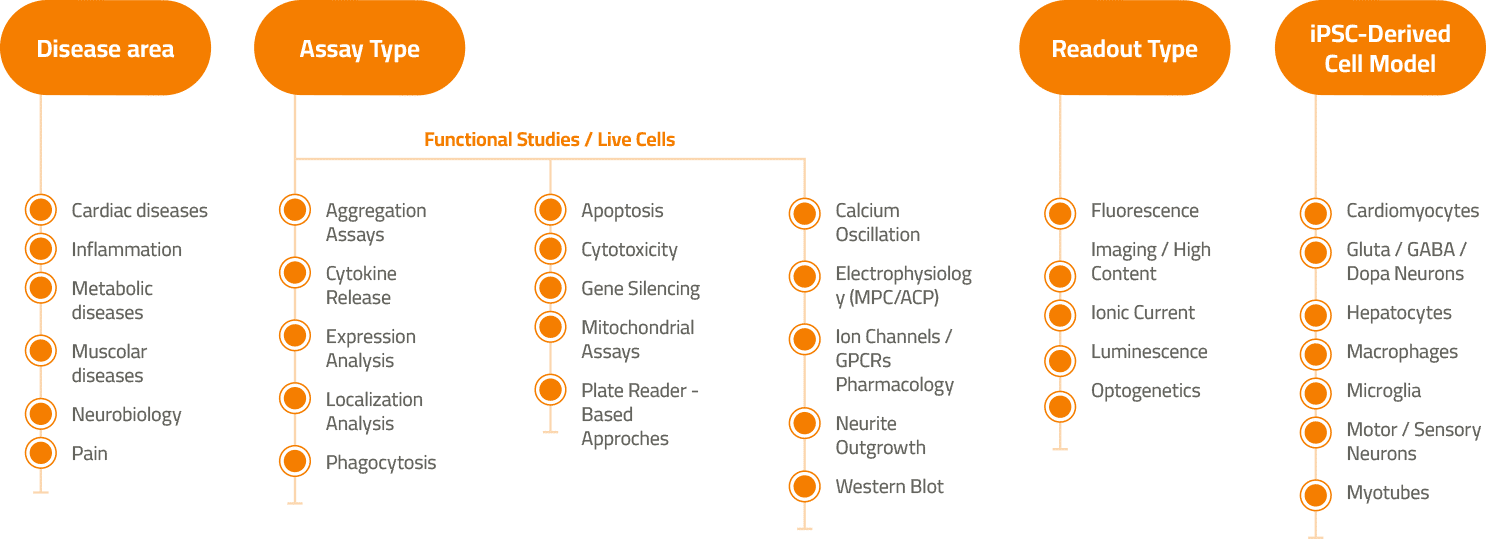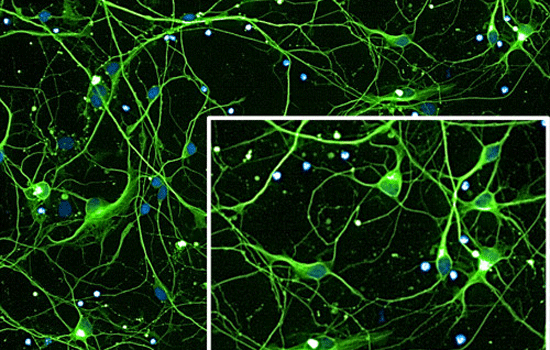iPSC Platform for Drug Discovery
Induced pluripotent stem cell (iPSC) technology has rapidly stood out as a cornerstone to model human diseases thanks to iPSCs’ ability to differentiate into several cellular subtypes. Animal models often do not recapitulate neuronal and neurodegenerative diseases: for example, they lack the selective neurodegeneration seen in the patients’ brains, making it difficult to use these models to validate the effective treatment on neurodegeneration. iPSC technology offers a powerful approach to perform mechanistic studies, conduct drug screening campaigns to discover new active small molecules, and/or identify and validate targets of interest.
We provide an iPSC-derived cell platform consisting of different cell populations characterized by purity and large-scale preparations, thanks to a long-term collaboration with trusted partners like FUJIFILM Cellular Dynamics, Inc. (FCDI), a leading global developer and manufacturer of iPSC technologies. Moreover, the license agreement that we have in place with iPS Academia Japan, Inc. allows us to genetically modify iPSCs (commercial or client iPSC lines) to insert specific mutations or reporter systems, and to differentiate such cells into disease-relevant cell types.
Among our services, we develop in-vitro assays using human iPSCs and iPSC-derived cells in a miniaturized 384-well plate format, providing our clients with an alternative to human primary cells that might not be available or might be accessible in an extremely limited manner. Our expertise includes working on several disease areas (cardiac diseases, inflammation, metabolic diseases, muscular diseases, neurobiology, pain, etc.) using several iPSCs including iPSC-derived neurons (motor/sensory neurons; Glutamatergic/GABA-ergic/Dopaminergic neurons), cardiomyocytes, hepatocytes, myotubes, and microglia cells including also co-cultures, hepatocytes, macrophages.
Our combinatorial approach employs functional tests, high content-based phenotypic analysis, electrophysiology, optogenetics, gene silencing, TaqManTM-based gene expression analysis, calcium oscillation assays, ranging from low to medium/high throughput screening and compound profiling, to obtain the most relevant results for your research.
Our iPSC-derived cell platform at a glance

Examples

iPSC-derived glutamatergic neurons (iCell GlutaNeurons –
FCDI) stained with b-III Tubulin (green) and counterstained
with Dapi (blue) for nuclei.
Microscope used: Operetta CLS (PerkinElmer), 20X
Magnification.

iPSC-derived Glutaneurons (iCell GlutaNeurons – FCDI)
stained with a-Tau antibody (red) and counterstained with
Dapi (blue) for nuclei.
Microscope used: Operetta CLS (PerkinElmer), 20X
Magnification.
Related content
Our iPSC assays
Check below the iPSC-derived cell assay platform to which Axxam can give you access and contact us for more information.
Aggregation Assays – Apoptosis – Calcium Oscillation – Cytokine Release – Cytotoxicity – Electrophysiology (MPC/ACP) – Expression Analysis – Gene Silencing – Ion Channel/GPCRs Pharmacology – Localization Assays – Mitochondrial Assays– Mitochondrial Assays – Plate Reader-based Approaches – Western Blot
